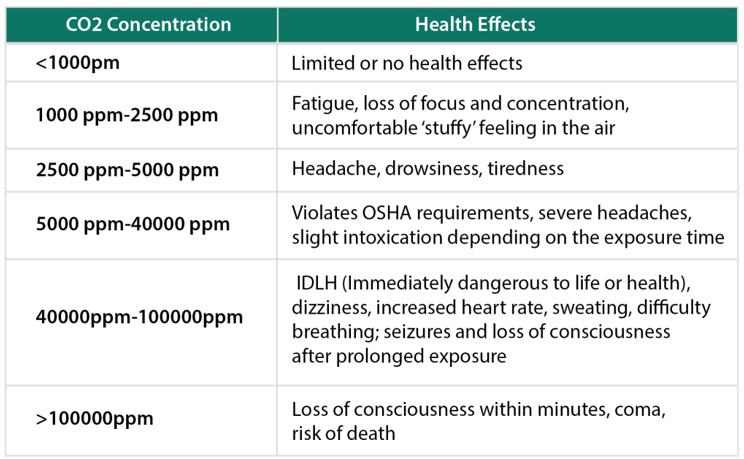Blog
Breathing Life into Buildings: The Importance of Monitoring Carbon Dioxide


Breathing Life into Buildings: The Importance of Monitoring Carbon Dioxide
Carbon dioxide, commonly known as CO2, is an odorless, colorless gas. It can also take on a solid form, as seen with dry ice. When CO2is heated, it transitions directly from a solid to a gas, and you won't find it in a liquid state. CO2 is classified as a greenhouse gas because, like the glass in a greenhouse, it traps heat and warms the environment. This greenhouse effect is essential, as it prevents Earth from being too cold to support human life. Despite constituting less than 0.1% of the atmosphere, CO2 plays a significant role in regulating the planet's temperature. It's not harmful in moderate concentrations and is actually vital for life on Earth. Our understanding of CO2's potential harm has evolved over time.
Outdoor CO2 levels typically average around 400 parts per million (ppm), the highest they've been in thousands of years. Indoor CO2 levels can rise much higher, reaching 1000 ppm or even 2000 ppm. Surprisingly, the primary source of elevated indoor CO2 levels is the human body. As we breathe, our bodies take in oxygen and release carbon dioxide, gradually increasing CO2 concentrations in enclosed spaces. Other sources of indoor CO2 include activities like smoking, cooking with gas or wood stoves, and using fireplaces. Essentially, any open flame in your home generates CO2. Outdoors, CO2 emissions disperse and become less of a concern, except in areas with exposure to natural or man-made fires or combustion, where CO2 levels can become dangerously high.
Is Carbon Dioxide Harmful to Health?
Carbon dioxide is not toxic in itself; it's an integral part of our environment. In fact, our breathing mechanism centers around CO2, not oxygen. The concern arises when CO2 concentrations become too high. CO2 acts as a simple asphyxiant, meaning that as levels increase in an enclosed space, it displaces the oxygen your body requires. This leads to reduced functionality, primarily affecting the brain.
Moderate CO2 levels, at around 1000 ppm, can cause observable impacts on thinking, reduced concentration and focus, and discomfort due to stuffy air. These levels are prevalent in settings like office meeting rooms, schools, and homes, and can hinder optimal bodily function.
At higher levels, around 2500 ppm, there are more significant reductions in cognitive function, particularly for tasks requiring advanced thinking. People may experience fatigue and headaches. These conditions, although less common, can still occur regularly in schools and poorly ventilated buildings.

The Importance of Monitoring Carbon Dioxide
Monitoring CO2 levels is increasingly crucial due to rising occupancy rates in buildings like offices and schools, especially in densely populated urban areas where creating new structures is challenging. Prolonged indoor exposure can make meeting participants and students feel drowsy.
Ensuring the proper functioning of your ventilation system is essential for maintaining indoor air quality. Studies have found that 52% of indoor air quality issues are related to inadequate ventilation.
To gauge your HVAC system's efficiency, you can assess CO2 levels. Typically, higher CO2 concentrations indicate lower levels of fresh air exchange. Improving ventilation and managing space more efficiently can help mitigate indoor CO2 levels and their effects. Carbon Dioxide sensors and transmitters are valuable tools for monitoring CO2 in commercial buildings, allowing facility managers and tenants to take measures to ensure healthy and safe indoor air. For more information, you can visit our website or contact one of our experts today.

